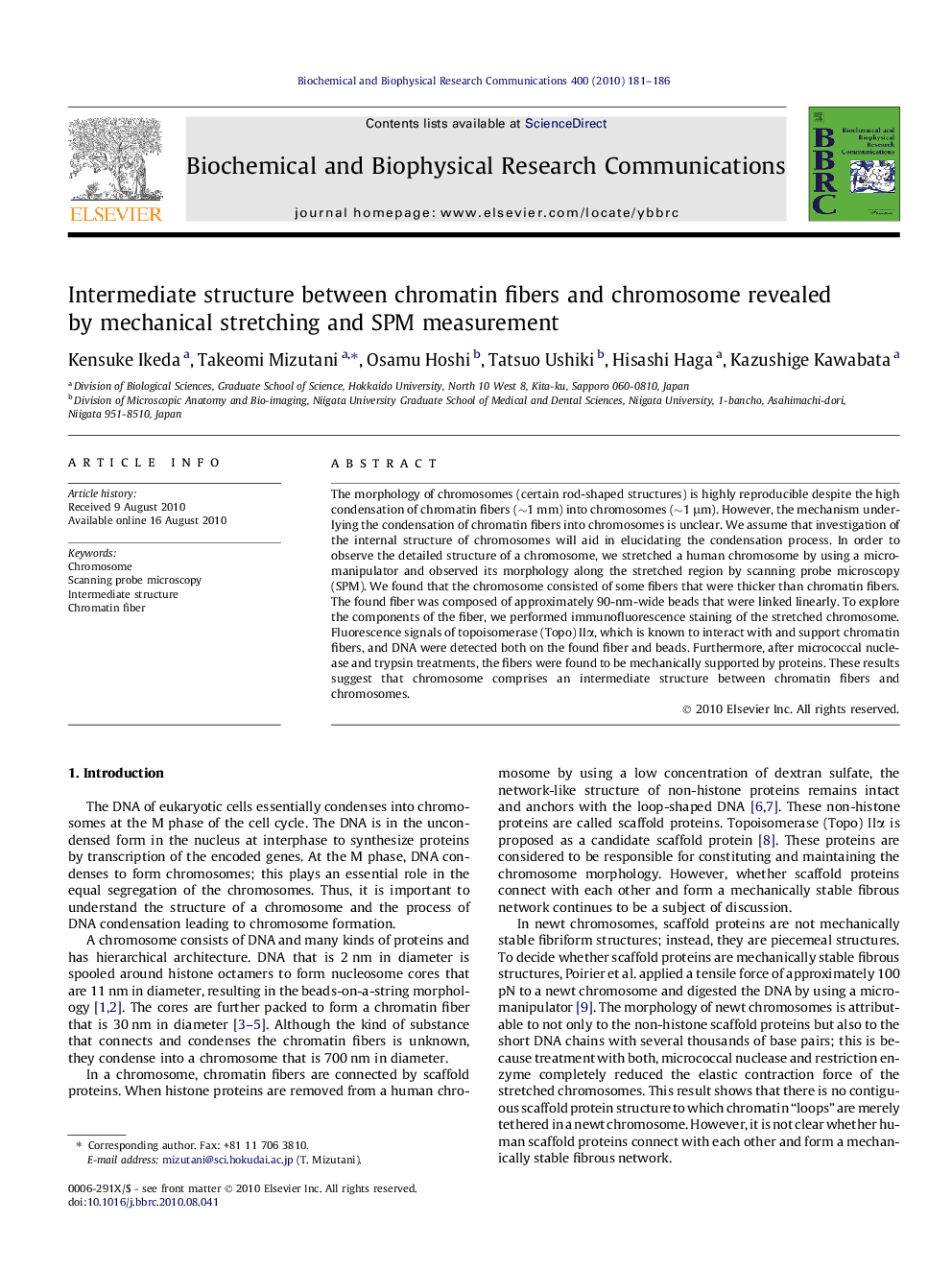| Article ID | Journal | Published Year | Pages | File Type |
|---|---|---|---|---|
| 1931446 | Biochemical and Biophysical Research Communications | 2010 | 6 Pages |
The morphology of chromosomes (certain rod-shaped structures) is highly reproducible despite the high condensation of chromatin fibers (∼1 mm) into chromosomes (∼1 μm). However, the mechanism underlying the condensation of chromatin fibers into chromosomes is unclear. We assume that investigation of the internal structure of chromosomes will aid in elucidating the condensation process. In order to observe the detailed structure of a chromosome, we stretched a human chromosome by using a micromanipulator and observed its morphology along the stretched region by scanning probe microscopy (SPM). We found that the chromosome consisted of some fibers that were thicker than chromatin fibers. The found fiber was composed of approximately 90-nm-wide beads that were linked linearly. To explore the components of the fiber, we performed immunofluorescence staining of the stretched chromosome. Fluorescence signals of topoisomerase (Topo) IIα, which is known to interact with and support chromatin fibers, and DNA were detected both on the found fiber and beads. Furthermore, after micrococcal nuclease and trypsin treatments, the fibers were found to be mechanically supported by proteins. These results suggest that chromosome comprises an intermediate structure between chromatin fibers and chromosomes.
Research highlights► Human chromosome comprises of a structure greater than chromatin. ► Fibers with 90-nm-wide beads make chromosome. ► Chromosome is mechanically supported by proteins rather than DNA.
